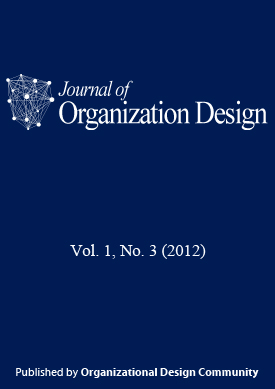Sequencing Organizational Change For Post-Shock Adaptation: A Simulation Model
DOI:
https://doi.org/10.7146/jod.7009Keywords:
Simulation, organizational change, change sequencing, implementation, organizational adaptationAbstract
What should an organization do after an environmental shock? What is the best sequence for changing organizational features or activities in response to a shock? In this study, a simulation methodology is used to examine how different sequences in changes to strategy, structure, and resource allocation affect the success of the adaptation process. Results show that the choice of change sequence leads to varying outcomes in organizational maneuverability, competence, and effectiveness. However, no one sequence is optimal for all scenarios; the best sequence choice depends on the goals of the change process as well as the content and direction of change. After an environmental shock, an organization should analyze and determine which sequence of change to follow. However, if there is little time for analysis, a reasonable heuristic is to implement a change in strategy first.Downloads
Published
2012-12-14
How to Cite
Gallo, P. J., & Burton, R. (2012). Sequencing Organizational Change For Post-Shock Adaptation: A Simulation Model. Journal of Organization Design, 1(3), 37–50. https://doi.org/10.7146/jod.7009
Issue
Section
Research Article
License
JOD requires that at least one author of each accepted paper sign a Copyright Transfer Agreement form. Copyright will be transferred to Organizational Design Community when the paper has been accepted.
Articles published in JOD are licensed under a Creative Commons Attribution-NonCommercial-NoDerivs 4.0 Unported License.



